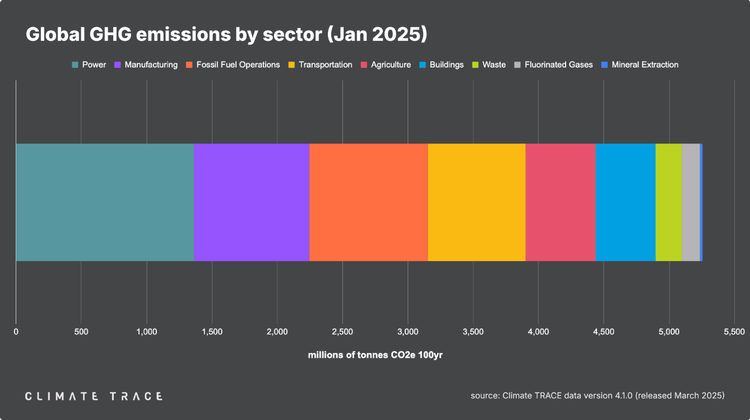Nature-related disclosures: more work needed to define materiality and financial impacts

Despite mounting guidance, it remains difficult for companies to assess their impact and dependencies on nature and biodiversity. But recent industry initiatives and the looming integration of nature-related disclosures into sustainability reporting frameworks indicate that the pace is accelerating.
The Task Force on Nature-Related Financial Disclosures (TNFD), a market-led initiative to help businesses quantify and manage their impacts on nature, quietly released its final recommendations at the end of September. And yet, 22% of members of the World Business Council on Sustainable Development (WBCSD) already referenced the TNFD in their 2022 sustainability reports.
One climate disclosure researcher, who prefers to remain anonymous, warns that mentioning the framework does not equate reporting in line with it. “I would say that they're mentioning the TNFD because their relevant stakeholders are beginning to increase the emphasis [on nature and biodiversity], so they know that this is going to be a thing. But they're not disclosing in the TNFD format,” they tell CSO Futures, adding that nature-related disclosures are still in their infancy.
Yet, it’s clear that the momentum – both at industry and government level – is growing.
Integration of nature-related disclosures into sustainability reporting
This month saw the launch of the European Business and Nature Charter for companies to publicly recognise the need address biodiversity loss and “show willingness to take action and contribute to a nature positive economy”. Businesses also expressed strong support for the EU’s Nature Restoration Law, which was adopted by a razor-thin margin last July and sets ambitious targets to restore and protect at least 20% of the EU’s land and maritime areas by 2030.
Nature and biodiversity impacts are also making their way into sustainability reporting frameworks: European Sustainability Reporting Standard (ESRS) E4 on biodiversity and ecosystems is “structurally compliant with TNFD and incorporates key content from it,” according to EFRAG Chair Chiara Del Prete.
And while the IFRS Foundation behind the new ISSB reporting standards is still finalising its next two-year plan, it has previously said it would “look to the TNFD recommendations – where it relates to meeting the information needs of investors – in its future work”. In fact, interoperability with the TNFD is set to be one of the topics discussed at its upcoming advisory council meeting.
To support companies in adapting to these new requirements, the World Business Council for Sustainable Development (WBCSD) has published a series of ‘roadmaps to nature positive’. These provide the steps that businesses in agrifood, forest products, built environment and energy systems can follow to assess and manage their nature impacts.
They are based on a pilot run by WBCSD and PwC with 23 companies attempting to implement the TNFD recommendations before they were finalised. In their feedback, these companies highlighted the need for further sector and regional guidance, as well as interoperability with other disclosure frameworks, such as TCFD.
What are the TNFD recommendations for nature disclosures
The recommendations of the Task Force on Nature-Related Financial Disclosures (TNFD) follow a similar approach to that of its sister organisation, the Task Force on Climate-Related Financial Disclosures (TCFD). It consists of general requirements and a set of 14 recommended disclosures structured around the four pillars of governance, strategy, risk and impact management, and metrics and targets.
Among the recommendations, the TNFD encourages companies to report on their board and management oversight of nature-related dependencies, impacts, risks and opportunities; describe their strategy to manage them and its resilience to different scenarios; explain how they assess nature-related risks in their operations and value chains; and disclose the metrics they use to assess these risks and opportunities.
But more local guidance will be required to put these recommendations into practice: to report in line with the TCFD for example, companies could rely on the climate scenarios published by governments. Biodiversity and nature are much more dependent on geography than greenhouse gas emissions, so government support to define material issues at the local level is even more crucial.
In fact, another consideration offered by companies in the WBCSD pilot was the provision of case studies on nature-related scenario disclosures, as well as best practices from the corporate and financial world.
“In the absence of that, companies are just writing fiction,” the researcher adds.
Assessing nature and biodiversity-related financial risks
One of the reasons there may not have been as much impetus to tackle nature-related risks, compared to climate risks, could be that their financial impact is not entirely clear yet. But this may simply be because companies have so far failed to measure it. An August 2023 CDP study showed that while almost all of the world’s 550 financial institutions take climate change into account in financial planning, less than a third look at forest issues and water security.
These financial institutions represent over US$8 trillion in market capitalisation, so CDP estimates that their inaction on nature and biodiversity has an impact on the entire economy and “impedes net zero ambitions”.
“Collectively, FIs must now integrate nature and elevate it alongside climate as a priority across their strategies and financial planning,” said Claire Elsdon, a global director at CDP. “It is important that they take stock of the extent to which their portfolio, operations, services and the businesses they support, rely on and are impacted by nature.”
Recent and upcoming sustainable finance regulations are likely to incentivise these efforts. For example, the EU Taxonomy includes the protection and restoration of biodiversity and ecosystems as one of its six environmental objectives. This could be a starting point for financial institutions to start tracking their nature impact as they begin their mandatory water and biodiversity reporting in January 2024.







Member discussion